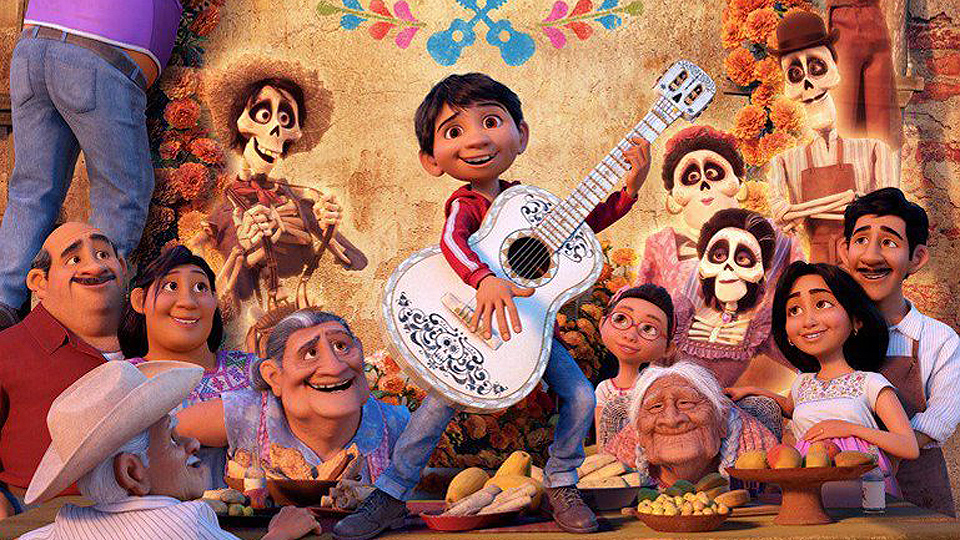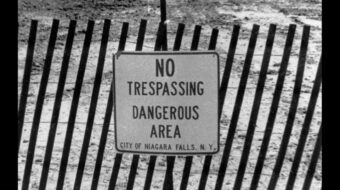
“Coco” is the story of young Miguel’s adventure into the world of the dead, where he goes in search of his great-great-grandfather, “the greatest Mexican musician of all time.” The movie achieved a level of authenticity and accurate cultural representation rarely seen in animated features set in a specific cultural context, by hiring a few Mexican Americans (and I emphasize, few) for the writing and consulting on the film.
Typically in animated features made by Disney/Pixar or other movie companies, the culture feels like a backdrop. There’s little effort to develop the ethnic characters or to explain characteristics of that ethnicity. It’s usually watered down or just plain offensively lazy, full of funny accents.
But simply comparing “Coco” to other animated movies trying to depict a particular culture is not doing the movie justice. It’s better than most animated movies because it did not follow an uber-formulaic mold that we have become accustomed to: no cute little girl as a love interest, no school bullies or fat kid as the main character’s sidekick providing cliché comic relief. And thank goodness, the family in “Coco” did not own a Mexican restaurant that is prioritized over a smart daughter’s college education. Sound familiar?
The movie is visually stunning. The main town in the “world of the living” is depicted with such detail, it could easily be San Cristobal, Chiapas, or Oaxaca City. “Mama Coco,” the oldest living matriarch of the family has wrinkles so convincing, she looks like the photo of Maria Sabina smoking a joint. The bolero and ranchero style songs were key because music is such an important storyteller of Mexican culture and history. The song “Recuérdame” is genuinely moving and “Poco Loco” is fun.
About three fourths of the way in, there’s a lull that slowed the pace and rhythm down a bit, which is my only complaint about the Disney/Pixar gem.
The story does its best to avoid predictability, and for the most part succeeds with a couple of somewhat surprising turns near the end. Every character has a real purpose, even Miguel’s pooch, a Xoloitzcuintli. The hairless Mexican dog serves a more pivotal role than one would expect.
The greatest achievement by the movie was the personal connections it made with so many Latino audience members whose lives parallel the themes and characters. For example, my mother is named Socorro, so she’s known as “Mama Coco” to her 12 grandchildren. My mother’s father played the violin and was an absent father for a large part of her life. I can go on. Writing a screenplay that your audience personally relates to is the goal of most films, but “Coco” is different because for once the story is not told through the lens of an Anglo world.
Coco is the first movie experience that my 76 year old mother and my 5 year old son both thoroughly enjoyed. I was reminded of the power of seeing yourself on the big screen, as a child, when I heard my son say, “Miguel looked like me!”
Overall “Coco” is a beautiful story, meticulously executed, that elicits pride, affirmation, wonder, and raw emotions. It’s unrealistic to think that “Coco” is the solution to a gaping absence of Latinos in Hollywood, in front of and behind the camera. However, now that Hollywood sees the enormously successful results of pursuing cultural authenticity by including Latinos as contributors in the storytelling, maybe it’s a start.
Reposted from Gozamos with the author’s permission.

MOST POPULAR TODAY

High Court essentially bans demonstrations, freedom of assembly in Deep South

UN warns that Israel is still blocking humanitarian aid to Gaza


Resource wars rage in eastern Congo, but U.S. capitalism only sees investment opportunity

U.S. imperialism’s ‘ironclad’ support for Israel increases fascist danger at home






Comments